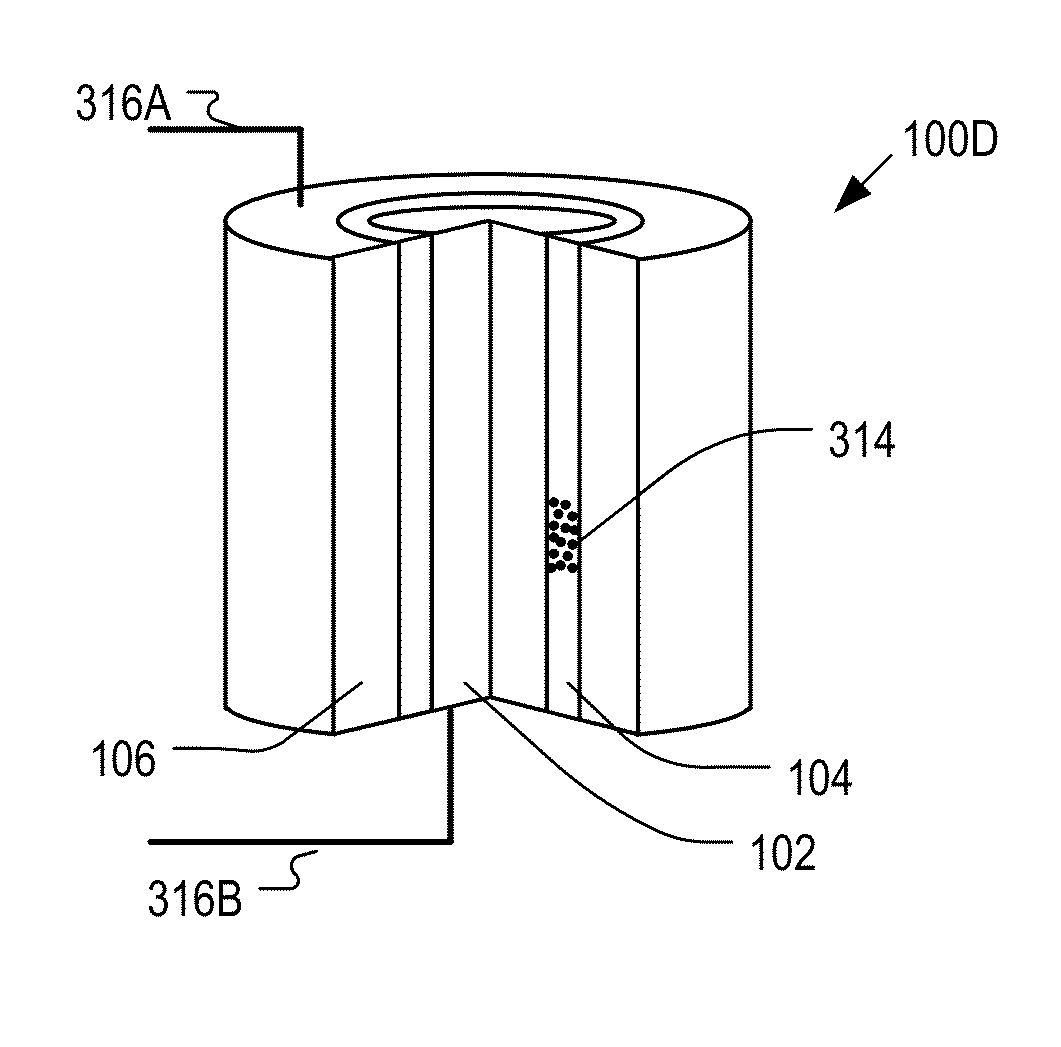Method and structure for plasmonic optical trapping of nano-scale particles
- Summary
- Abstract
- Description
- Claims
- Application Information
AI Technical Summary
Benefits of technology
Problems solved by technology
Method used
Image
Examples
Embodiment Construction
[0040]FIGS. 1A-1D depict coaxial plasmonic aperture 100A in accordance with the illustrative embodiment of the present invention. Coaxial plasmonic aperture 100A comprises core 102, channel 104, and cladding 106, inter-related as shown.
[0041]In some embodiments, core 102 has a cylindrical shape. In some alternative embodiments, core 102 has a polygonal perimeter. Core 102 preferably comprises a metal, more preferably a noble metal. In some alternative embodiments, highly-doped semiconductors or metals can be used. In the illustrative embodiment, core 102 comprises silver.
[0042]A change in the core material will result in a change in the plasmonic resonance frequency of coaxial plasmonic aperture 100A. Thus, changing the core material results in a shift in the operating range of coaxial plasmonic aperture 100A, which, as a function of trapping application, might be useful. Those skilled in the art, after reading this specification, will be able to determine the shift in operating ran...
PUM
 Login to View More
Login to View More Abstract
Description
Claims
Application Information
 Login to View More
Login to View More - R&D
- Intellectual Property
- Life Sciences
- Materials
- Tech Scout
- Unparalleled Data Quality
- Higher Quality Content
- 60% Fewer Hallucinations
Browse by: Latest US Patents, China's latest patents, Technical Efficacy Thesaurus, Application Domain, Technology Topic, Popular Technical Reports.
© 2025 PatSnap. All rights reserved.Legal|Privacy policy|Modern Slavery Act Transparency Statement|Sitemap|About US| Contact US: help@patsnap.com



